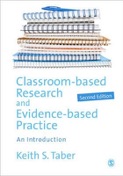Educational Research Methods
A site to support teaching and learning...

Construct repertory test
- The method of triads
This is a personal site of Keith S. Taber to support teaching of educational research methods.
(Dr Keith Taber is Professor of Science Education at the University of Cambridge.)
2016
George Kelly (1963) originally developed Personal Construct Theory (PCT) for use in counselling, but his (constructivist) ideas and elicitation techniques have been found to of much wider value.
Research tools
Kelly’s theory developed from his work as a psychologist/counsellor. He devised research techniques to explore his client’s ‘construct systems’ of their worlds:
The construct repertory test (a.k.a. ‘Kelly’s triads’) - to elicit constructs
Repertory grid - to see how constructs were related
Construct repertory test - The method of triads
“In its original form the technique was called Role Construct Repertory Test. Here, the subject is asked to name 20 or 30 people they know who fit different role titles [*] … Those who fit roles … are called elements. Constructs are then elicited by taking three elements at a time.
In the Role Construct Repertory Test, the procedure ends there, having provided some insight into the what the person construes their interpersonal environment.” (Bannister & Fransella, 1986: 49.)
(Bannister & Fransella, 1986, p.44.)
Bannister, D., & Fransella, F. (1986). Inquiring Man: The Psychology of Personal Constructs (3rd ed.). London: Routledge.
20 or 30?
“How many constructs should be elicited in order to make the matrix representative of the person's ultimate matrix? …twenty five or thirty may suffice…we have reason to suspect that these proportions …change as one becomes more mature...” (Kelly, 1961/1969: 109)
Kelly, G. (1961/1969). A mathematical approach to psychology. In B. Maher (Ed.), Clinical Psychology and Personality: The selected papers of George Kelly (pp. 94-113). New York: John Wiley & Sons.
Picking the odd one out:
“…suppose I take this pack of cards and select three of them for your particular attention. Perhaps they are the ones which are written the names of your father, your form professor, and present supervisor. I give them to you and ask you to think of some important way in which you regard two of them as similar to each other but in contrast to the the third.” (Kelly,(1961/1969: 106)
Kelly, G. (1961/1969). A mathematical approach to psychology. In B. Maher (Ed.), Clinical Psychology and Personality: The selected papers of George Kelly (pp. 94-113). New York: John Wiley & Sons.
Why triads?
“The classical notion of a concept as a property attributable to two or more objects which are otherwise distinguished form each other ignores an important psychological fact. That fact is that, while a concept may be defined academically in this way, it serves no human purpose unless the user is immediately concerned with at least one other object which he intends to negate the property. If he were not immediately concerned with such a negation his current reference to to a common property would be indiscriminate and psychologically footless. Thus a concept as defined in the dictionary is of little concern to a psychologist. But a concept on the occasion of its use is quite another matter.” (Kelly, 1966/1969: 9)
Kelly, G. (1966/1969). Ontological acceleration. In B. Maher (Ed.), Clinical Psychology and Personality: The selected papers of George Kelly (pp. 7-45). New York: John Wiley & Sons.
* For example
A teacher you liked.
A teacher you disliked.
Your wife (husband) or present girlfriend (boyfriend).
An employer, supervisor, or officer under whom you worked or served and whom you found it hard to get along with.
An employer, supervisor, or officer under whom you worked or served and whom you liked.
Your mother, or the person who has played the part of a mother in your life.
Your father....
Your brother nearest your age, or the person who has been most like a brother.
Your sister nearest your age....
A person with whom you have worked who was easy to get along with.
A person with whom you have worked who was hard to understand.
A neighbor with whom you get along well.
A neighbor whom you find hard to understand.
A boy you got along well with when you were in high school.
A girl you got along well with when you were in high school.
A boy you did not like when you were in high school.
A girl you did not like when you were in high school.
A person of your own sex whom you would enjoy having as a companion on a trip.
A person of your own sex whom you would dislike having as a companion on a trip.
A person with whom you have been closely associated recently who appears to dislike you.
The person whom you would most like to be of help to.
The most intelligent person whom you know personally.
The most successful person whom you know personally.
The most interesting person whom you know personally
Link to some simple instructions for carrying out the method of triads
